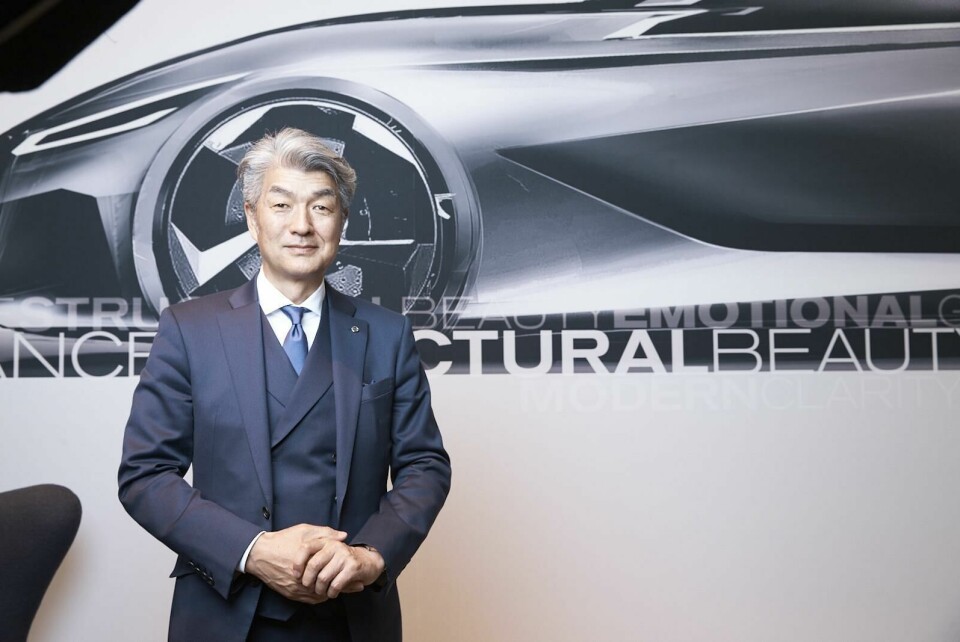
Car Design Review 4 highlights: Mamoru Aoki, Nissan
From the Car Design Review 4 yearbook: we chat to Nissan’s executive design director about where they go next. Electric GT-R, anyone?
We will have to be even more innovative on future Nissan projects. There are still many SUVs being made with traditional methods and we have some electric vehicle know-how already, but future EV proportions will be completely different. Take Faraday Future’s FF 91 and the Jaguar I-Pace.
Traditionally, expensive cars had a long hood, tight cabin and a short tail. These ones have a very short noses and roomy cabins. To make a new EV is a tough job. The new Leaf will come in late 2017, around the Tokyo motor show. This time, we don’t want to stay just with a hatchback or a sedan, we want to explore more variations.

Could ‘Godzilla’ become an all-electric ‘Mechagodzilla’?
To have a GT-R EV would be very interesting too. We want it, but we need to study the package. The proportions would have to be different – due to where we would need to put the batteries – but I think we could fit them in with a long wheelbase, big wheels and a wide stance: that would make the car very nice, basically. We explore many things.
On the functional side, crossovers have a lot of advantages, so sedans have to be beautiful and balanced. To do this we must push them to be longer and wider. To realise that proportion into production is very important.

The biggest event of 2016 for us was the launch of the Micra, generation five. We also showed the Gripz concept in Geneva [after its initial unveil in Tokyo 2015]. Those two cars were mainly made for Europe so were very important for us. So far Nissan is very strong and has a good reputation in the crossover field but we don’t have such a good image in small hatchbacks and certain other areas.
I think two generations before, the Micra was also popular but the last one [Mk4] was not accepted enough, perhaps because it was perceived to lack character.

That Micra was made for Asia, especially Japan. The new Micra is purely aimed for Europe so we changed the proportions around. It’s much wider [+77mm], lower [-69mm] and longer [+170mm] – the proportion change was enormous. For this new Micra we designed it for all genders and generations, and changed from a very friendly face to a more dynamic one. We’re looking for a more 50/50 male/female sales split now.
We’re [still] making global cars but there are some exceptions like the Titan [US-market pick-up] and the Serena [MPV in Japan]: these are regional cars.Designers from any country are welcome. We offer good locations. I think Nissan is the most globalised design team with studios in the US, Europe, China and Japan.
That last point is important because for some people, staying in Japan for a long time is not so easy. We want to secure talented people so our breadth of studio locations is helpful. I know other brands have many studios but their designers do not always get the chance to work on production cars.

We always invite newcomers and experienced designers alike to work on every competition. We do a lot of different types of car, from Micra to GT-R, and three brands – Nissan, Infiniti and Datsun – so we offer a lot of choice.
We have 800 staff in total, including modellers, within the Nissan group [including Infiniti and Datsun]. Each team makes very different proposals, which is very stimulating for us. Of course, we need to make well-designed cars, but the world is very small. And every car-maker is finding the same influences, so cars are getting more similar.
In the next 10 years I want to push Nissan a bit more above the crowd in terms of perception.
Car Design Review 4 contains the best concept and production cars of the year, as chosen by the world’s leading designers, trends, student work, and much more. And it’s available now.





